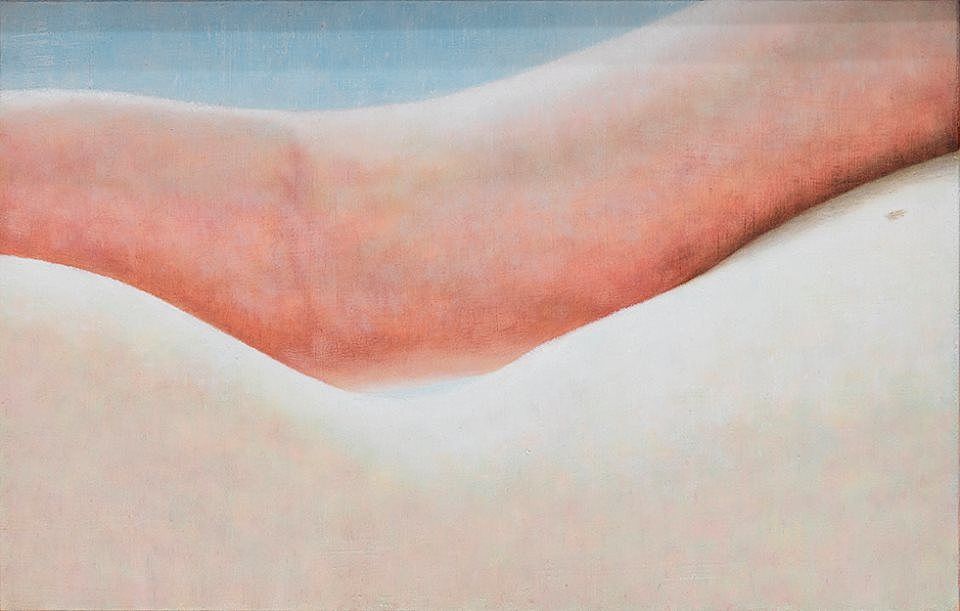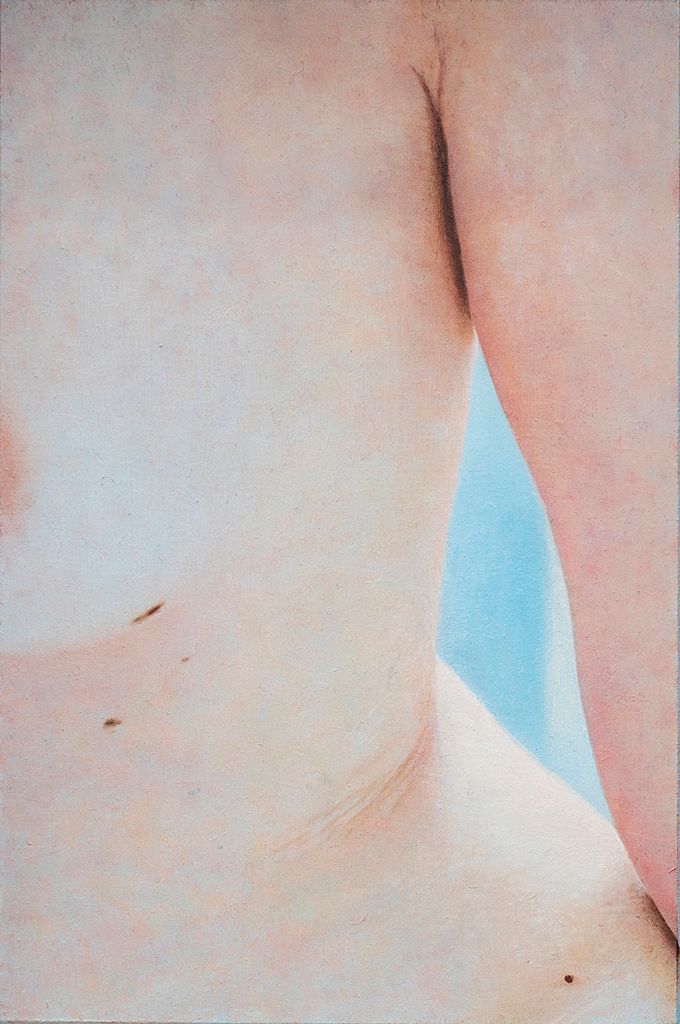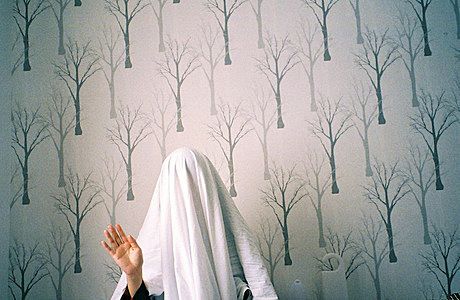Review: a deep and tumbling kind of laughter
Eloise Callister-Baker on the fruits of John Ward-Knox's Frances Hodgkins Fellowship
John Ward Knox excites me. Selected as the 2015 Frances Hodgkins Fellow at the University of Otago, he followed a line of similarly exciting visual artists, like Patrick Lundberg, Zina Swanson, and Nick Austin. But a deep and tumbling kind of laughter, his final fellowship project, wasn’t what I had expected out of the 12 months’ support.
Here, eleven small oil paintings of meticulous human skin are dwarfed by very wide wooden frames. The paintings are spread through the three parts of the gallery leaving several walls, somewhat appropriately, naked.
The curation tells a story that moves from abstract to concrete. The first painting in the series has smooth blotches of soft pink, slightly yellow and white in places. A cluster of tiny brown dots and a small oval seemed like random details until I realised I was looking at freckles - maybe a bellybutton on a stretched, flat tummy. This skin seems a healthy red – the blue from the light “has been sucked away into epidermal strata,” as Knox writes – unlike the skin in the next painting, which appears as water, made of dilute blues and purples.
In the following paintings, body parts become increasingly more distinguishable, and my view through these small windows onto a backside, breasts, and a waist feels increasingly voyeuristic. The final painting is the most concrete – there is an arched neck, the underside of a chin, dark hair, and even an earing. Whose skin have I been staring at so closely? Are these paintings fragments from intimate encounters?
Knox’s process of layering details – veins beneath skin, freckles, discolouration, wrinkles – reflects how skin itself is made of layers; it is not a surface but, as Knox describes, “a subtle and fleeting display of depth.” The bold rough textures and inconsistencies between the large board frames (some are smoothed down, one is stained with paint, another has many indents) contrasts with the fragile, wavering presence of this detail. There is something both repellent and glorious about skin.
Four years ago, in moon draws water (i), a show held at Robert Heald Gallery in 2012, I was mesmerised by Knox’s work. Knox had painted ethereal oil squares of grey speckled with white and blobs of colour within a square of white cotton. The cotton was pulled over a wooden frame, it was so thin that light could pass through it. The paintings looked like abstracted flowers floating in pools of stars. It was such a delicate and clever series. Again, Knox has returned to exploring how light passes through objects of varying translucency.
And yet there’s a certain sterility to the gorgeousness and craft. Knox’s earlier work, especially his sculptural work like his cigarettes made of bone and dice made of wisdom teeth, suggested a mind drawn to experimentation that I imagined he would take further during his time in Dunedin. But a deep and tumbling kind of laughter, while beautiful, it did not challenge me or extend on his past innovations. I wanted to be re-enchanted by Knox, by his interpretation of light, but I left dispelled.
John Ward-Knox’s a deep and tumbling kind of laughter is at Dunedin’s Hocken Gallery until 30 April.


